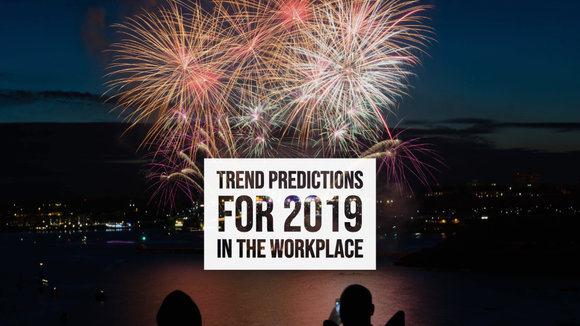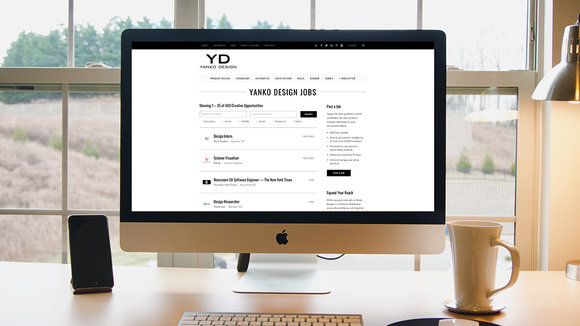1/6
Trend predictions for 2019 in the workplace
2018 has sped by with 2019 knocking on our doorsteps already! And as we go about making our new year’s plans, let’s plan a bit about our work situation too. This article, by Lindsay Tigar, gives us the seven trends stated by industry experts that list down the things that will shape our office culture in the coming year. So with the best of season’s greeting, bring the new year in along with some food for thought as to how you can navigate your office next year.
Looking to hire an awesome designer to take your company to new heights in 2019?
with YD Job Board to connect with our dynamic young professionals who are always on the lookout for interesting opportunities.
Looking for a job change to kick-start the new year? Check out
to find an opportunity now.
Another lap around the sun, another 12 months to make goals, another four quarters to propel your career and make some moves. There’s a reason so many people look forward to the beginning of a New Year since it signals an opportunity to refresh, reflect and restart their lives, perspective and for most, their careers.
Industry experts also track change and progress year over year, allowing them to predict trends that will emerge in the workplace. From how companies will hire, to the best practices for employees continuing their education, 2019 will bring a shift in the professional workforce and setting.
As the number of millennials not only enter the workforce but start to lead teams and get promoted to the c-level suite, business coach Christine Agro predicts companies will zero-in on communication. More specifically, they will become smarter about the way they develop strategies surrounding internal and external best practices.
“There is a greater awareness that not all people react and respond the same way and that past experiences affect how we communicate and what we communicate, coupled with differences in generational approaches,” she continues. “In order for companies to create positive and effective workplace culture, the healthy development of advanced social and emotional intelligence — particularly at the executive level — is going to be essential in attracting and retaining high level, skilled employees.”
Over the next few years, head U.S. Analyst at the trend-predicting company Stylus shares rapidly advancing automation will revolutionize our working lives. How so? One word: robotics.
“We are already seeing more fluid, interactive forms of collaboration between people and robots that complement each other’s strengths,” she continues.
However, adapting to the shifting dynamic may take time, since Alyson Gough says many workers will feel wary of automation. However, she notes companies that enable trust-based, easy and natural ‘co-bot’ workplace relationships will reap the benefits.
In fact, Pennsylvania’s Carnegie Mellon launched America’s first undergraduate degree in Artificial Intelligence this fall, making a case for how much more we will rely on robotics across many industries in the quarters to come.
More than ever, there are numerous resources available for eager professionals who want to continuously improve their skill set. Whether they desire to learn a completely new leg of the business or they want to refresh an area they already have experience in, career expert Steve Grant predicts the year ahead will bring a heightened awareness for the need of education long after graduation.
From LinkedIn Learning, Busuu and Coursera to Udemy, edX and The Khan Academy, many lessons and modules meet budget constraints and should be an ask of any employee who wants to exceed.
While previous generations remained committed to the same job from the time they were fresh out of college until retirement, chief learning officer at MentorcliQ Paul MacCartney explains millennials have a much shorter attention span. He explains the average job stay is now 2.9 years, especially as more professionals branch out to start their own companies or become freelancers.
This could be beneficial and lucrative or the individual, but it makes employers wary and prompts them to double-down on their retention strategy. “For the long term, companies need to retain top talent for a longer duration of tenure. This is what drives succession programs, he explains.
Career expert Jeff Kohl echoes MacCartney, added the issue on everyone’s mind is a shrinking workforce — both due to the new millennial way of approaching success and the fact we’re entering the age where baby boomers are retiring.
“A smaller workforce creates numerous challenges including finding labor and paying them competitively,” he continues. “There is also the challenge of creating a fun culture that makes new hires happy and keeps current employees engaged so you don’t lose them.
“This is the time to analyze your company culture. People don’t run away for a few dollars an hour, they run away from bad management.”
In recent years, many companies have adopted the thriving ‘gig’ economy, hiring freelancers to take on some of the deliverables in a speedy, contracted fashion. This has inspired many full-time professionals to bargain for the ability to work remotely or have a varied schedule that thrives on flexibility. Argo says this may shift in 2019, predicting the pendulum could swing away from work-from-wherever and back to an in-office mandate.
However, she notes it won’t solve the issues employers might attribute to remote working since the heart of the issue is not having a clear and defined company culture. Within time, they could again be open to talented professionals who prefer to be productive outside of a corporate setting. How come? They’ll realize what matters most.
“Although geographically disparate, this trend speaks to the emerging employee pool in industries where employers see skill as the most valuable asset, not a person’s physical presence,” she explains. “Great communities and relationships can be built via video conference, and those companies that understand how to make room for remote workers will continue to attract those that are highly skilled, think organically and oftentimes outside the box and who desire new experiences.”
And not merely volunteer ones outside of the office, but corporate programs that are a top priority in developing culture, according to Kohl. He notes a study conducted in 2017 by the Association for Talent Development found 71 percent of Fortune 500 companies already have this in place.
Whether this is a pairing, a monthly event or a course that new employees take, there is a priceless value on mentoring, especially since it has aided so many people in the advancement of their career. In fact, the same study found 75 percent of executives credit mentors with helping them to arrive at their success and tenure.
Though wellness has been a hot topic in the workplace for years, Gough says companies will be hyper-aware of their employees well being than ever before in 2019. Not only does this mean implementing a health-focused culture that supports productivity, but modeling the open-floor plan to be more conducive to the need for quiet.
She also adds that more subtle tactile and visual cues will also be used to trigger our brains into perceiving a sense of nature through natural-mimicking lighting, sounds, and air quality, for a reassuring essential connection.
YD’s endeavor is to increase your efficiency by connecting you to your ideal candidates.
has curated Industrial Design followers for the past 15+ years, and we know these are the best match for your company. To recruit now,
with us!
The original write up by
.
发布于2019-02-27
颜色
相关推荐






